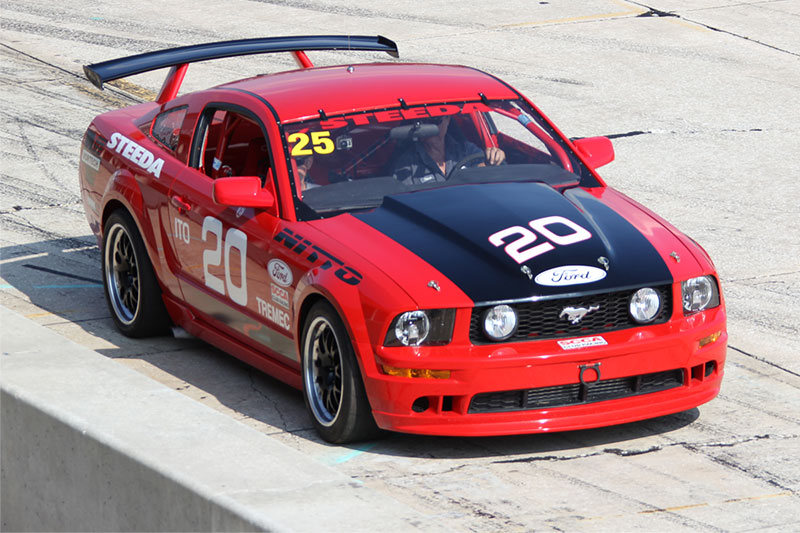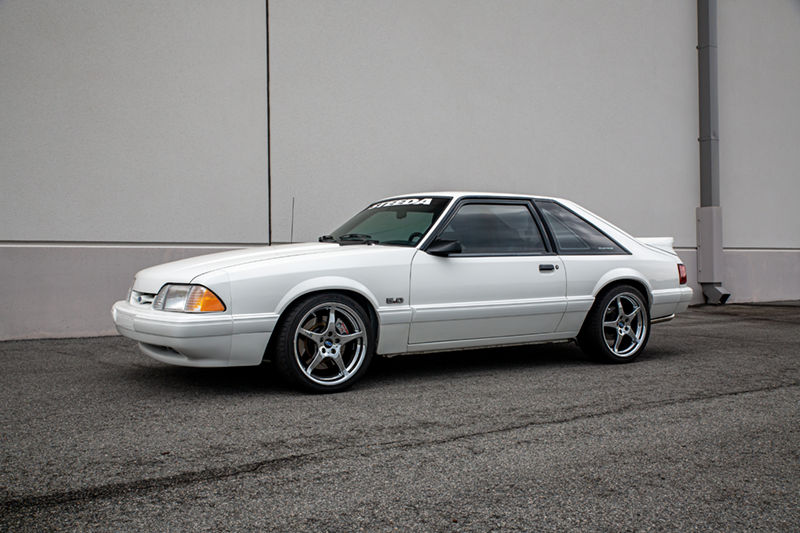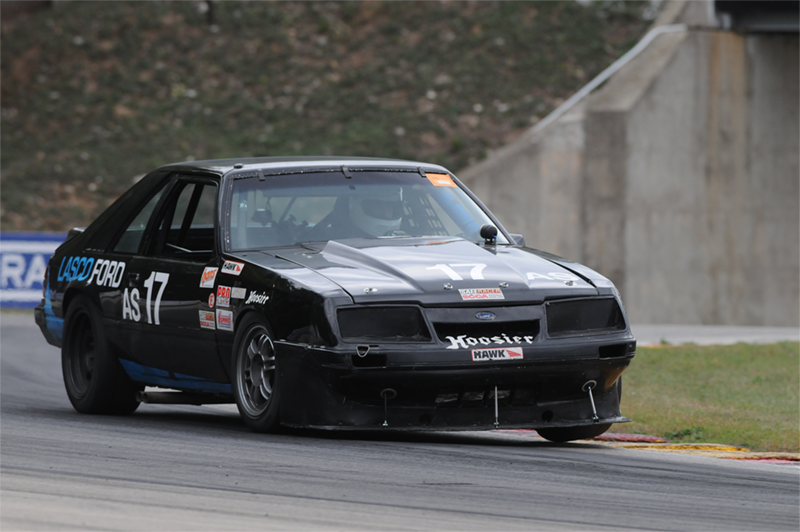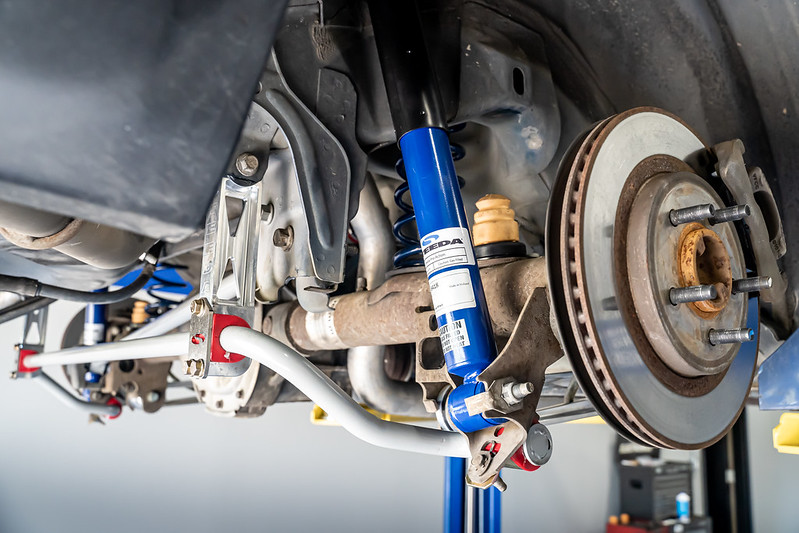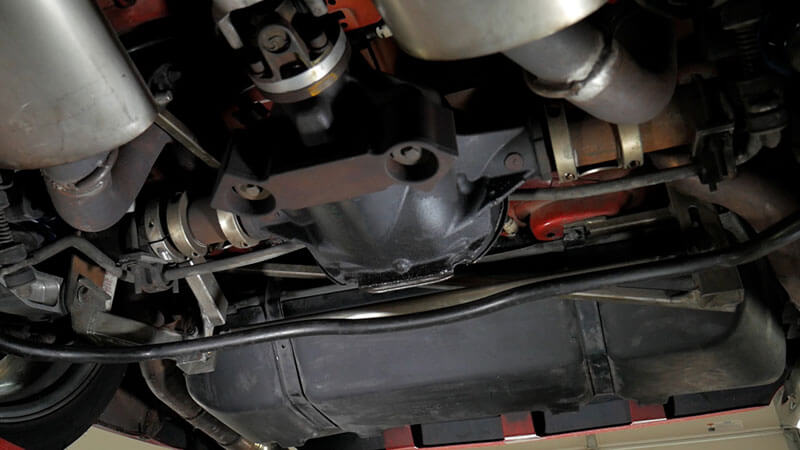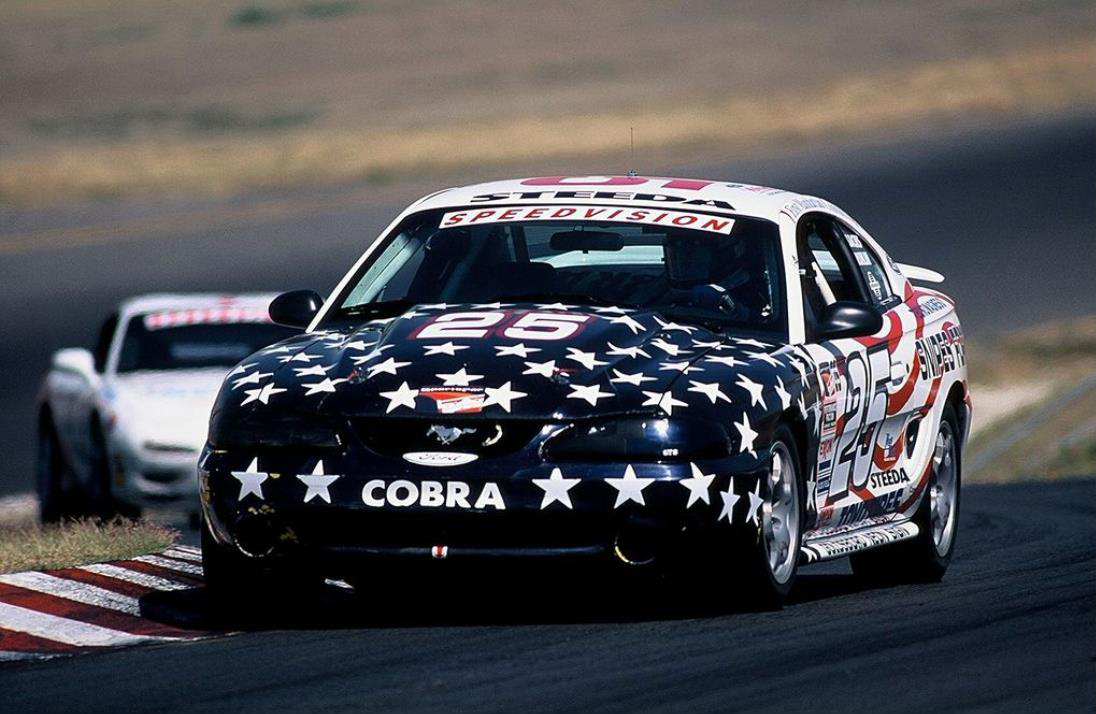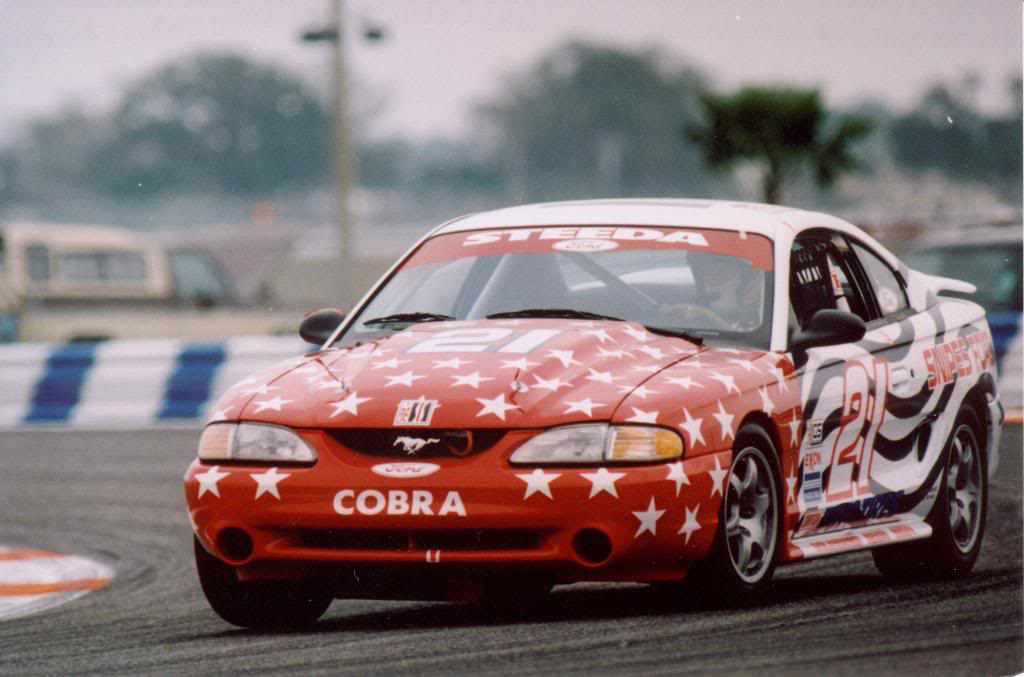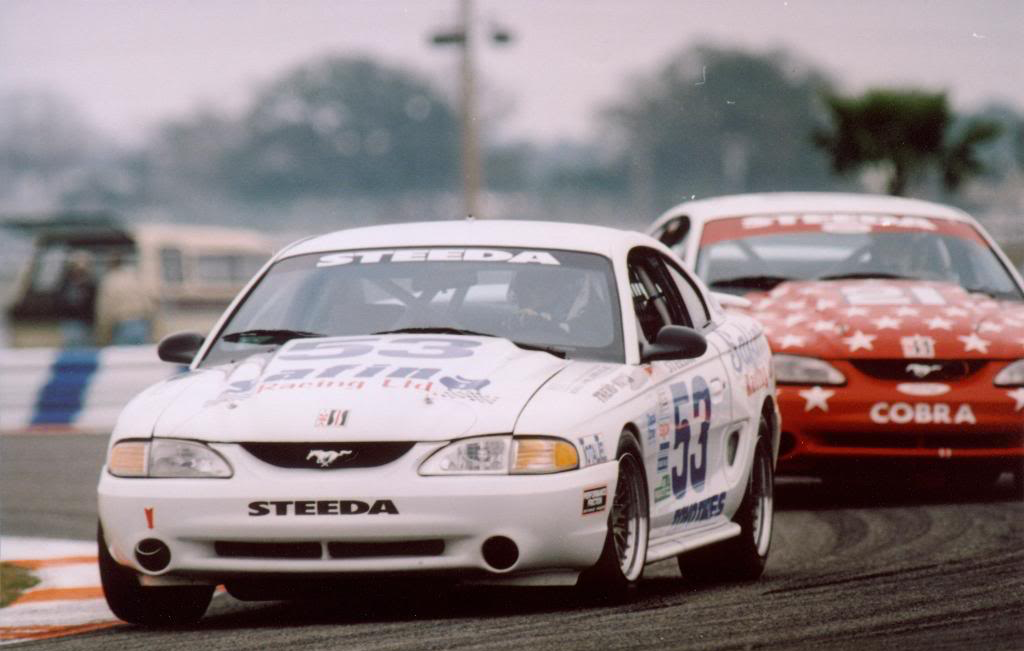By pushing the cars to the brink on the track and living with them on the street,
Steeda engineers well-rounded upgrades. Founded in the heyday of the Fox Mustang, the company continues to move forward with the S650, but not at the expense of forgetting its roots. Those Blue Oval roots run deep from a family connection at Ford to a long history with its cars, which dates back to the Fox Mustang era. Having opened a performance shop in the mid-’70s, Dario Orlando competed in prestigious racing events like the 24 Hours of Daytona and the 12 Hours of Sebring in his early 20s. His skills eventually earned the attention of Ford Motor Company,
where his father Domenico, was part of the team that designed Blue Oval icons like the ’50s Thunderbird, the original Mustang, and the Ford GT40 racer that conquered Ferrari at LeMans in 1967. Ford needed assistance with the Merkur XR4-TI program so
they brought Dario and a few other drivers in to assist with program development. “At the request of Ford, I flew out to Sonoma, California for the Merkur XR4-TI program/testing orientation” commented Dario. “When I arrived, I met up with several other drivers Ford signed up for the testing program – specifically Bob Bondurant and Steve Saleen.
Steve coincidently had his ’85 Mustang out there, which is one of the first examples I ever drove. Being that I was primarily a racer of various very nimble import cars like the Datsun 1200s, MGs, and Alfa Romeo GTVs where I won three championships and honed my skills,
I took the Mustang out on the track and I couldn't believe how well the car handled for a big car…” Sebring Mustang Following that driving encounter and believing he could more efficiently build tuner Fox Mustangs, Dario built his first model, known as the “Sebring Mustang” based on a 1988 Mustang LX he purchased. Believing in it so strongly,
he quit his job with a Volvo dealership but asks the dealer’s owner if he would consider selling these new performance Sebring Mustangs at his Ford Dealerships. “So I pull up at the Ford Dealership with the white Sebring Mustang LX, and I start showing it to the Dealer Principal. Midway through my presentation the Dealer Principal called the general manager at his other dealership in Miami and said ‘Dario is going to be coming down
to pick up a hatchback and a couple of coupes to turn them into Sebring Mustangs,’” Dario recalled. From there, fate was on his side. As his new company launched, another local outfit ceased operations. They just happened to have an inventory of cars that would easily supply the foundation for Dario’s faster horses. “George Huisman (of Classic Design Concepts) used to live in Pompano. He worked for Excalibur. So they would buy like 50 black notchback Mustangs LX and they would cap the front end and build these Excalibers. They were these like old, vintage-looking vehicles.
The company went broke so Plantation Ford, or Luke Bolton Ford, at the time had 40 of these Mustangs as a floorplan for you the conversion company, they didn't know what to do with them.” That influx of cars led to the birth of Steeda. Soon the company was working in concert with Ford engineers to develop the company’s 1989 model as Ford embraced aftermarket upgraders like Steeda to infuse the Mustang brand with the kind of excitement that would help
keep the Probe from supplanting it as Ford’s performance model. Steeda's 1989 Mustang GT From there the Steeda story picked up speed, as Dario campaigned a Mustang in IMSA completion and the company assisted Ford SVT with developing the 1993 Mustang Cobra R. The company collected a championship in the Fun Ford Weekend series’ Outlaw 5.0-liter World Championship
and even worked with a local Ford rep to solve a mysterious high-idle issue on the fuel-injected 5.0-liter engines in Fox Mustangs of the era. That rep was Gil Pepitone, who served as a Ford Powertrain Field Engineer in South Florida back then. At the time the ’83-’86 5.0-liter engines were stalling, hesitating, and throwing codes that engaged the check engine light. Working in concert with Dario and the Steeda Team,
Gil determined that the cause of the issue was high resistance in some of the pins in the two 10-pin connectors perched atop the long-runner factory intake manifold. Steeda's 1995 #20 Cobra R “The assistance from Steeda helped seal the deal and prompted Ford to revise vendor wiring harness production methods as well as generating a Technical Service Bulletin,” Gil recalled. Well before Ford moved into its Modular era, Steeda became more integral in the development, competition, and success of the 1995 SVT Mustang Cobra R in IMSA competition. The Cobra Rs racing under the Steeda banner saw repeated success, racking up endurance race victories at Sebring and Texas Motor Speedway, lapping the entire 65-car field twice in the process. Along the way, Steeda continued using the racetrack as a proving ground for its aftermarket upgrade program. The company developed a litany of upgrades, most notably suspension components, that delivered enhanced performance with deference toward keeping noise, vibration, and harshness in check. A milestone modification for 1979-2004 Mustangs came in the form of Steeda’s heralded 5-Link rear suspension, which supplanted the factory four-link geometry in favor of more linear and controlled rear suspension movement. With Ford continuing to advance the Fox-4 platform under the New Edge era Mustangs beginning in 1999, Steeda leveraged the Blue Oval’s Technology Transfer program to develop improved aftermarket upgrades, including factory-level engine calibrations. That connection also paid dividends on track, where the Steeda Q400R earned victories at Sebring and Nashville. That factory support continued as Ford introduced its landmark retro pony car based on the then-new S197 platform in 2005. Tied in with Ford’s Technology Initiative, Steeda gained early access to the S197 Mustang to develop its upgrades. This allowed the company to hit the ground running with a robust lineup of
hardware as these cars galloped onto the streets. Moreover, Steeda debuted its S197-based Mustang in the Ford Display at the North American International Auto Show in Detroit Auto Show in January 2005. Steeda's 'Ol Yellow Pre-Production S197 Mustang Steeda had the foresight to expand its manufacturing footprint by opening a 100,000-square-foot facility in Valdosta, Georgia in 2008. This allowed the company to power forward for the final years of the S197 platform, which saw the company earn a Special Recognition Award for Outstanding Achievement in Design from Ford Motor Company.
All the while, the company’s products for the earlier Mustangs remained relevant, proven by highlights like Ed Hosni winning the SCCA National Championship in 2012 with Steeda 5-link onboard his Fox Mustang.
Over the years Steeda remained on the cutting edge of Mustang performance. The company continued its tradition of developing robust, effective upgrade packages and products for the 2015-2023 Mustangs based on the S550 platform developed to usher in the Mustang as a global performance vehicle.
The process continues to this day as Steeda continues to offer, test, and develop upgrades for the 2024 and newer Mustangs known as S650s.
That said, the company hasn’t forgotten its roots. Dario is well aware that more than 2.6 million Fox Mustangs and 2 million SN-95 Mustangs rolled out of the factory. Many of those cars are still on the road and being modified. They need upgrades or fresh hardware, and Steeda already has robust offerings for those cars, but the company is working on improving those existing parts and innovating new ones.
Adding fresh fuel to that fire, Dario recently picked up a 1993 Mustang LX and gave it the Steeda treatment. However, driving that car allows him to reassess its performance and look for areas where it can be improved.
“I have the New Edge and we had an SN-95, but I wanted a Fox-body. I wanted one where Steeda started from and that's why we did that,” Dario said. “We made a lot of changes. We've got the new control arms and now we're getting rid of the exhaust drone. I want to make it a driver’s car.”
Likewise, Steeda still has SN-95, New Edge, and S197 stallions in its stable, and those cars are continually used to review the existing upgrades and look for avenues of improvement in both performance and driver comfort.
Steeda's 2001 Q400R
“We are going to revisit spring rates and spring frequencies on the S197. There are ideas that I learned on the S550 and S650. There’s a lot of technology newer technology in those vehicles, but it's still the vehicle dynamics remain the same,” Dario explained. “So a lot of things that I learned on those vehicles that I can actually move back into S197 and even the Fox-body,
especially engineering information related to spring frequency and downforce. The software that I have now allows us to revisit those vehicles and make sure that our spring frequencies are very good. And if they're not, I can tweak them a little bit. So we’re going to be tweaking that up a little bit with the stay bars and stuff like that.”
While Steeda’s development of the S650 platform is exciting, owners of earlier Mustangs can rest assured that the company will continue looking for ways to improve the performance of their rides for years to come.
Steeda's 2005 #20 S197 Mustang Dario's 1993 Foxbody Mustang Ed Hosni's SCCA National Sedan Championship Winning Mustang Steeda's S197 Suspension Package Steeda's Championship Winning 5-Link Rear Suspension System The Posse 1995 SVT Mustang Cobra Rs The Posse 1995 SVT Mustang Cobra Rs The Posse 1995 SVT Mustang Cobra RsSteeda Sticks To Its Roots With Renewed Development On Fox, SN-95, & S197

Right out of the gate, Steeda focused on honing the performance of Mustangs and other Fords, while not sacrificing their street manners.
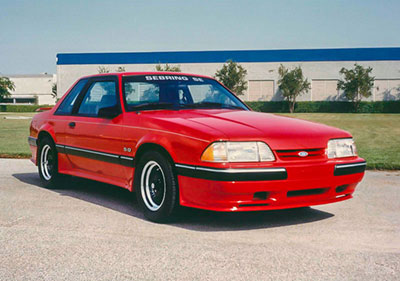
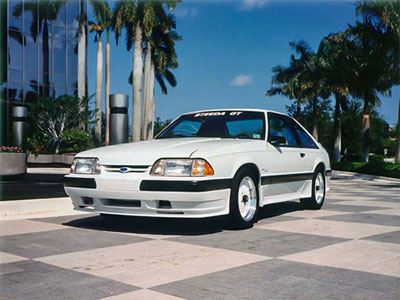
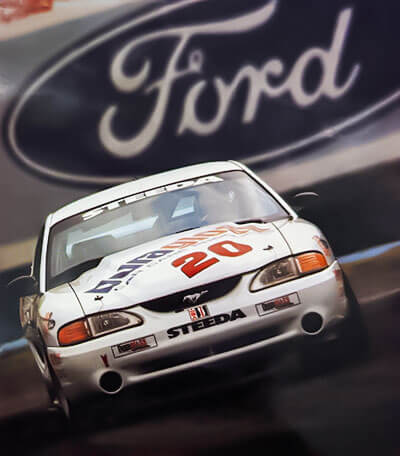
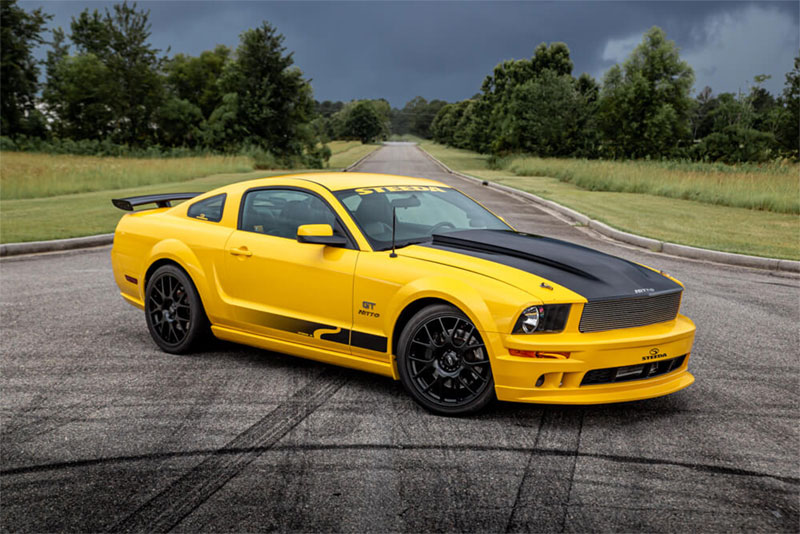
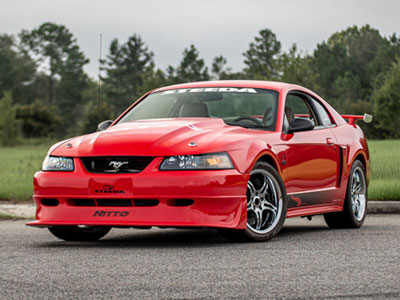
Photos
